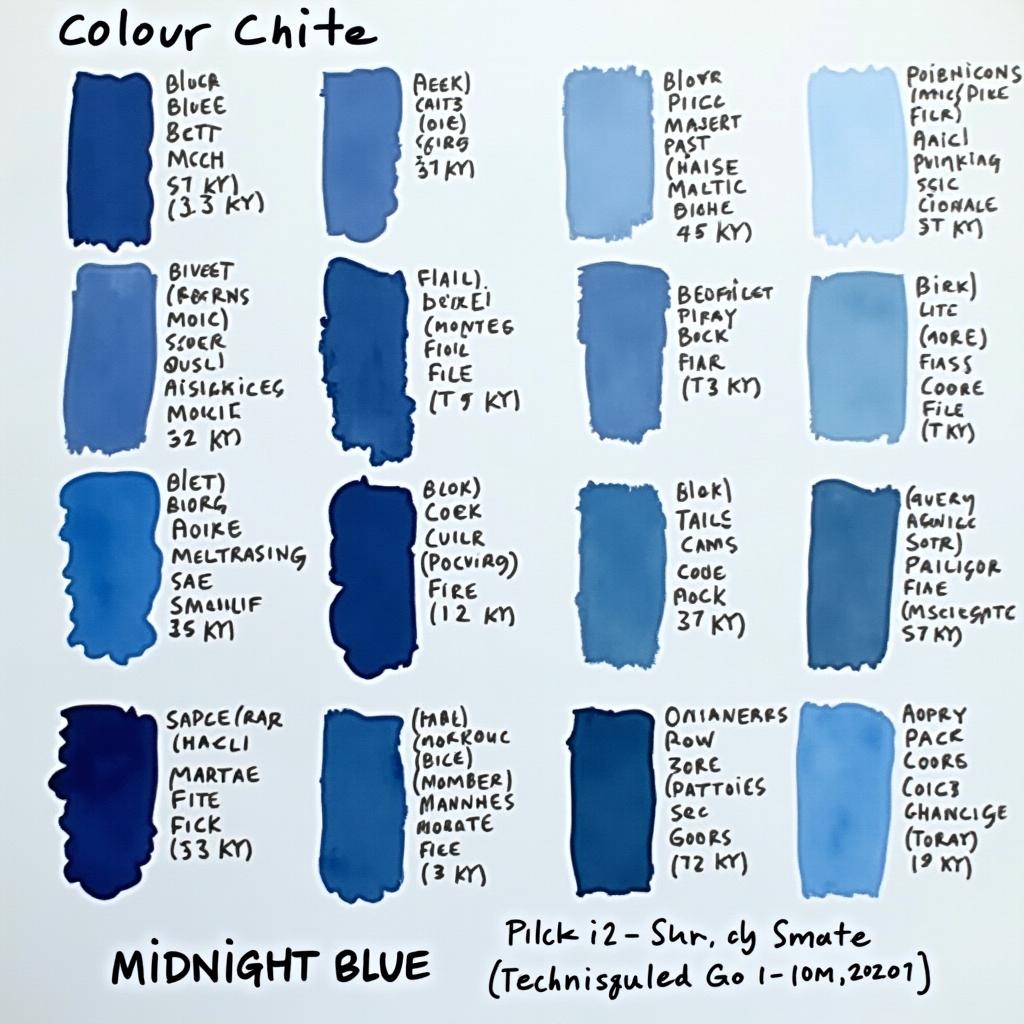Midnight blue is a captivating and elegant color that evokes feelings of mystery, sophistication, and tranquility. It’s a versatile hue that can be used in a wide range of applications, from painting to fashion to interior design. But achieving the perfect shade of midnight blue can be a challenge, as it requires careful blending of primary colors.
In this guide, we’ll explore the different ways to create a midnight blue color, delving into the art of mixing pigments and the science behind color theory. Whether you’re a seasoned artist or just starting out, understanding how to make midnight blue will unlock a world of creative possibilities.
Understanding the Basics of Color Theory
Before we dive into the specifics of mixing midnight blue, let’s first understand the fundamental principles of color theory. Color theory is the foundation of all color mixing, and it’s essential for understanding how colors interact with each other.
Primary Colors: The Building Blocks of Color
The primary colors are the three basic colors from which all other colors can be derived. They are:
- Red: Represents passion, energy, and warmth.
- Yellow: Represents joy, optimism, and happiness.
- Blue: Represents calmness, serenity, and trust.
Secondary Colors: Mixing Two Primary Colors
When you combine any two primary colors, you create a secondary color. These are:
- Orange: Red + Yellow
- Green: Blue + Yellow
- Purple: Red + Blue
Tertiary Colors: Mixing a Primary and Secondary Color
Tertiary colors are formed by combining a primary and a secondary color. These colors offer a wider range of hues and allow for more subtle variations.
Complementary Colors: Colors That Contrast
Complementary colors are opposite each other on the color wheel. When placed next to each other, they create a high-contrast effect and enhance each other’s vibrancy. For example, blue and orange are complementary colors.
How to Make Midnight Blue Color: Different Techniques
Now that we have a basic understanding of color theory, let’s explore the various methods for creating midnight blue:
1. Using Blue and Black: The Classic Approach
The most common method for making midnight blue is by combining a base blue pigment with black. Start with a generous amount of blue, then gradually add black until you achieve the desired depth and intensity. This technique allows you to adjust the shade from a slightly darker blue to a deep, rich midnight blue.
“When mixing midnight blue, remember to use a small amount of black at a time. You can always add more, but it’s difficult to remove it once it’s incorporated.” – Samantha Parker, Professional Artist
2. Adding a Touch of Red: Enhancing the Depth
For a more complex and nuanced midnight blue, consider adding a small amount of red to the mix. Red acts as a warm counterpoint to the cool blue, adding depth and richness to the final color.
“A touch of red can really transform a simple blue into a captivating midnight blue. It adds a layer of complexity that’s hard to achieve with just blue and black.” – Thomas Miller, Interior Designer
3. Incorporating Ultramarine Blue: A Versatile Choice
Ultramarine blue is a pigment known for its beautiful blue tones and its ability to create a range of hues. When used as the base color, ultramarine blue can produce a vibrant and luminous midnight blue.
4. Using Indigo: Achieving a Richer Shade
Indigo is a deep blue pigment with a hint of violet. When mixed with a touch of black, it can produce a rich and luxurious midnight blue. Indigo is particularly suitable for creating a more saturated and intense shade of midnight blue.
5. Experimenting with Glaze Techniques: Achieving Depth and Dimension
Glazing is a technique that involves applying thin, translucent layers of paint over a base layer. When used with midnight blue, glazing can create a sense of depth, texture, and dimension. By applying multiple layers of different shades of blue and black, you can achieve a subtle and captivating effect.
FAQs: Answering Your Questions About Midnight Blue
Here are some frequently asked questions about making midnight blue:
1. What is the best blue pigment to use for making midnight blue?
There is no single “best” blue pigment, as the ideal choice depends on the desired effect. Some popular options include ultramarine blue, cerulean blue, and cobalt blue.
2. Can I use black paint in place of black pigment?
While black paint can be used, it’s generally recommended to use black pigment for a purer and more intense midnight blue.
3. How do I know when I have the right shade of midnight blue?
Experimentation is key. Start with a small amount of paint and gradually add more until you achieve the desired shade.
4. Can I make midnight blue with watercolor paints?
Yes, you can make midnight blue with watercolor paints using the same techniques described above. Watercolor paints are transparent, so the layers of color will blend together to create a rich and complex midnight blue.
5. What are some examples of midnight blue in nature?
The night sky, the depths of the ocean, and some types of gemstones like sapphires can all be considered examples of midnight blue in nature.
Conclusion: Unleashing Your Inner Artist with Midnight Blue
Understanding how to create midnight blue is a valuable skill for artists, designers, and anyone interested in color. By mastering the art of color mixing, you can unlock a world of creative possibilities and bring your artistic visions to life.
Remember: Experimentation is key! Don’t be afraid to try different combinations of colors until you find the perfect midnight blue for your project.

Whether you’re painting a canvas, designing a website, or decorating your home, midnight blue offers a captivating and timeless option that will elevate your creations.
Need help finding the perfect midnight blue for your next project? Contact us today for expert advice and personalized color consultations!